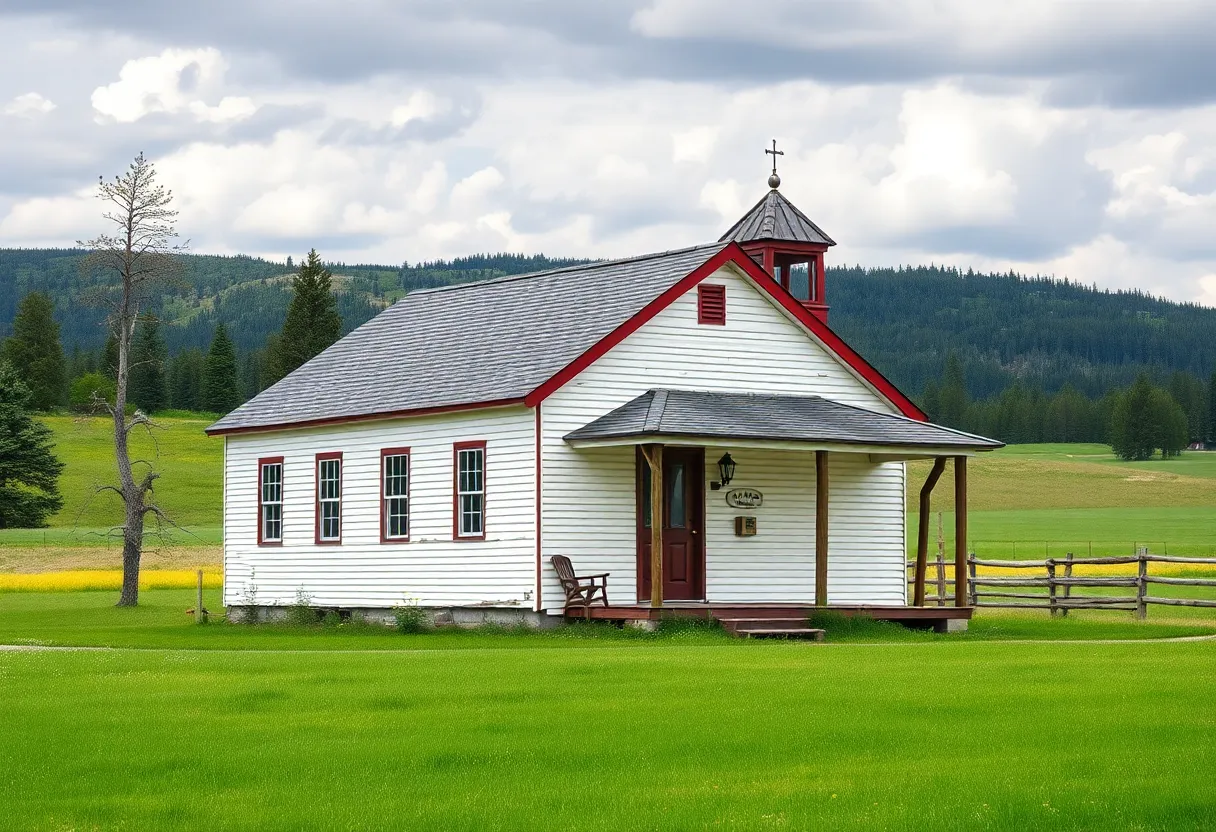News Summary
Montana’s small rural schools are grappling with enrollment declines and administrative burdens. Despite preservation efforts for historic schoolhouses, the future of these vital community institutions hangs in the balance. Many one- and two-room schools are struggling due to increased regulatory demands and operational challenges, threatening their ability to provide personalized education and sustain rural life.
Montana’s Small Rural Schools Face Challenges Amid Preservation and Administrative Strains
Livingston, Montana — Despite ongoing efforts to preserve the state’s historic rural schoolhouses, many small schools across Montana are experiencing a decline in enrollment and facing increasing administrative challenges. These issues threaten the continued operation of many one- or two-room schoolhouses, which serve as vital community hubs in rural areas.
Preserving Montana’s Rural School Heritage
Montana is home to approximately 100 active rural schoolhouses, representing the highest number among U.S. states. Historically, the state had over 2,600 one-room schools, but today only about 50 remain in operation. These schools offer a glimpse into Montana’s educational past and serve as symbols of rural community life.
One such school is Pine Creek School, located south of Livingston. It currently enrolls 13 students from kindergarten through second grade. The school offers an environment believed to benefit children with short attention spans and fosters close-knit community relations. Teachers like Taylor Neibauer, who has been instructing at the school for three years, attest to the positive aspects of small school settings.
Efforts to preserve these historic structures include programs facilitated by organizations such as Preserve Montana. The group has documented 812 such schoolhouses statewide, with the goal of safeguarding as many as possible through grants, training, and community engagement. These efforts include assessment workshops, like one conducted in Sixteen, Montana, a community largely abandoned today, where old school buildings are being evaluated for potential restoration.
Owners of the Sixteen schoolhouse, Gaida Hobby Martin and Pamela Ann Hobby Zimmerman, intend to restore the building and transform it into a venue for retreats and educational experiences that mimic the early 20th century. Such projects highlight community nostalgia and the desire to maintain historical ties. These initiatives aim to reconnect residents and visitors with Montana’s rural history, especially focusing on schoolhouses as cultural landmarks.
Administrative Challenges and Declining Enrollment
Despite these preservation efforts, small rural schools grapple with significant administrative hurdles. Many of these districts rely on a single administrator who assumes roles such as both superintendent and principal, making day-to-day management increasingly difficult. Recent policy changes and legislative requirements have added further burdens, especially for schools with limited staff.
The Montana Office of Public Instruction (OPI) has implemented substantial revisions that have complicated operations for small districts. These include new testing standards, reporting protocols, and compliance requirements mandated by recent laws, such as House Bill 203. While intended to increase school choice, this legislation has led to lower enrollment in some districts and prompted closures in rural communities, including schools in the Flathead County area.
Five schools in Flathead County are set to lose their top administrators because of these combined pressures. Many small districts have only one administrator, who often manages multiple roles, increasing workload stress. This situation is compounded by a wave of retirements and resignations among district superintendents, especially in rural counties like Flathead.
Funding and Policy Changes Impacting Rural Education
Funding remains a critical issue for rural districts, which depend heavily on local support. Recent initiatives to shift tuition payments to the county level aim to help alleviate financial pressures but have not fully addressed systemic issues. The move seeks to provide greater financial stability but requires adaptation from districts already strained by increased administrative duties and declining student populations.
Additionally, teachers in rural Montana are facing heightened scrutiny due to the increased frequency and rigor of student assessments mandated by new testing standards. This added pressure affects classroom management and overall morale, further complicating efforts to maintain quality education in small schools.
Community and Future Outlook
Despite these obstacles, many administrators and community members remain committed to preserving Montana’s small, rural schools. They view these institutions as essential community assets that foster local identity, provide personalized education, and sustain rural life. Community-led restoration projects and statewide preservation initiatives demonstrate ongoing dedication to maintaining this educational heritage.
In summary, while Montana’s rural schools continue to face declining enrollments, administrative burdens, and legislative challenges, efforts to preserve these historic schoolhouses and support rural education persist. Balancing the need for modernization with heritage conservation remains a key focus for Montana communities and policymakers alike.
Deeper Dive: News & Info About This Topic
HERE Resources
Additional Resources
- KTVH: Preserving the Past – Montana’s Rural Schools Closing at an Alarming Rate
- Flathead Beacon: Education for Rural Schools in Montana
- Daily Montanan: U.S. Senate Passes Bill Reauthorizing Funding for Rural Schools
- Whitehall Ledger: Montana Rural Teacher of the Year
- Wikipedia: Rural School
Author: STAFF HERE WASHINGTON DC
The WASHINGTON DC STAFF WRITER represents the experienced team at HEREWashingtonDC.com, your go-to source for actionable local news and information in Washington, DC, and beyond. Specializing in "news you can use," we cover essential topics like product reviews for personal and business needs, local business directories, politics, real estate trends, neighborhood insights, and regional news affecting the area—with deep expertise drawn from years of dedicated reporting and strong community input, including local press releases and business updates. We deliver top reporting on high-value events such as the National Cherry Blossom Festival, Kennedy Center Honors, and the Washington Auto Show. Our coverage extends to key organizations like the Greater Washington Board of Trade and Destination DC, plus leading businesses in government contracting and technology that power the local economy such as Lockheed Martin and Amazon. As part of the broader HERE network, we provide comprehensive, credible insights into the dynamic landscape of the Washington metropolitan area.





